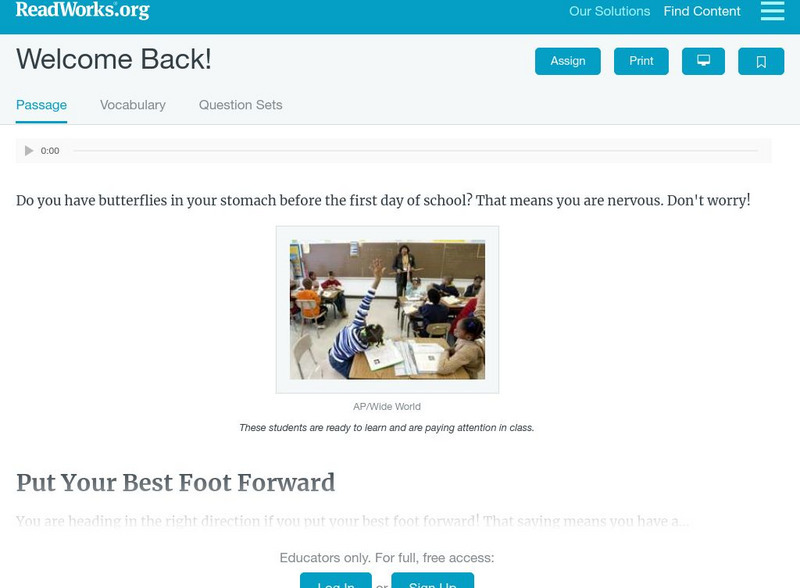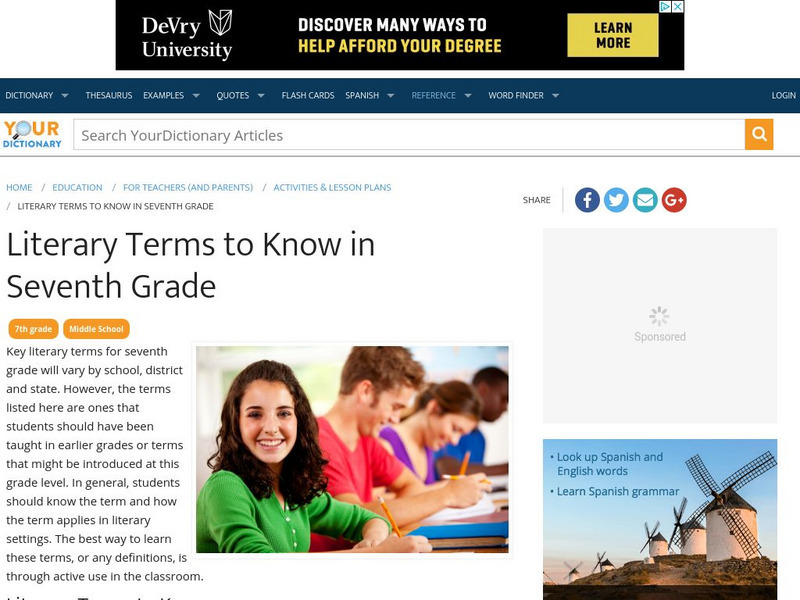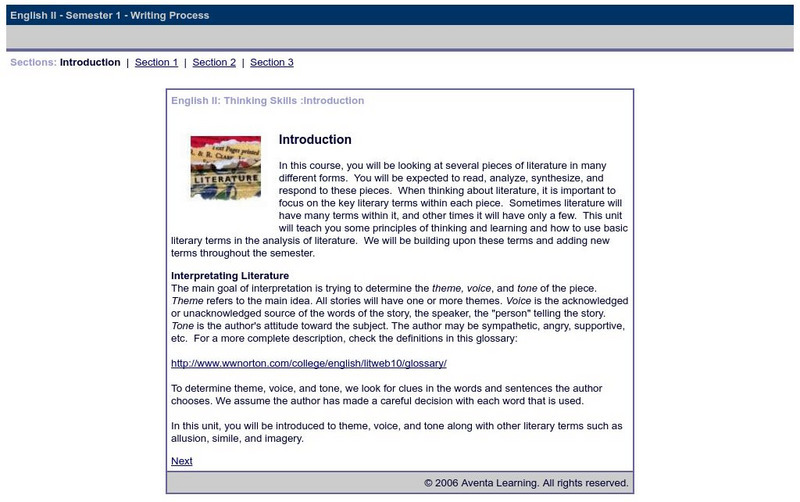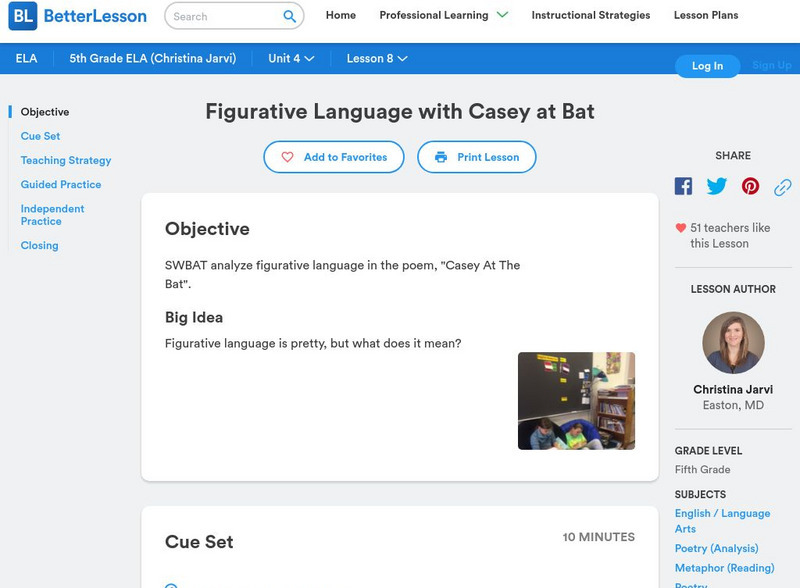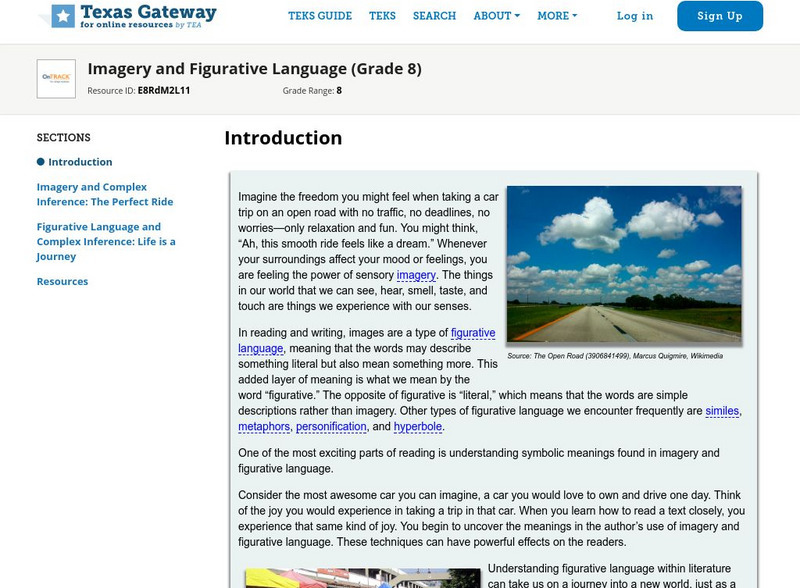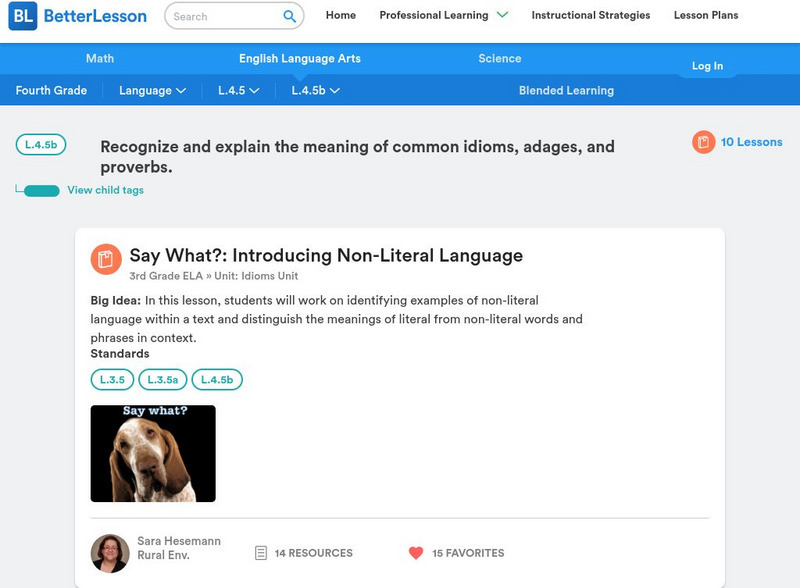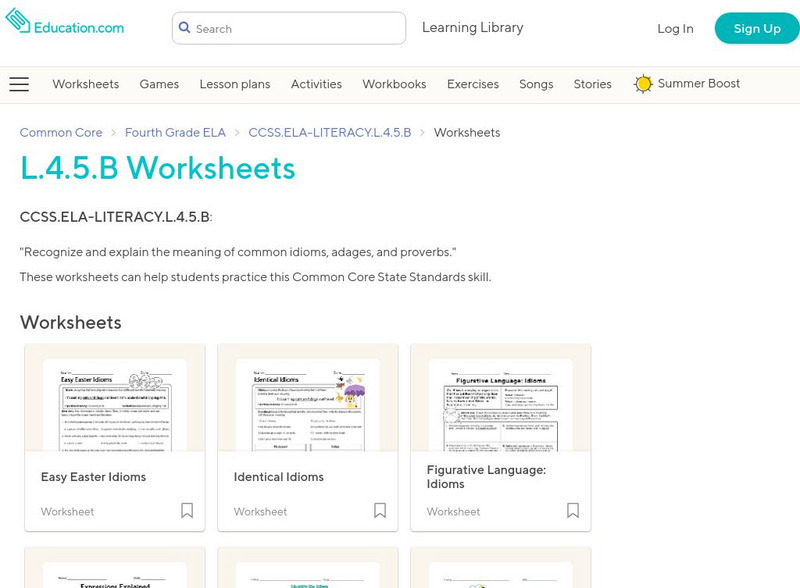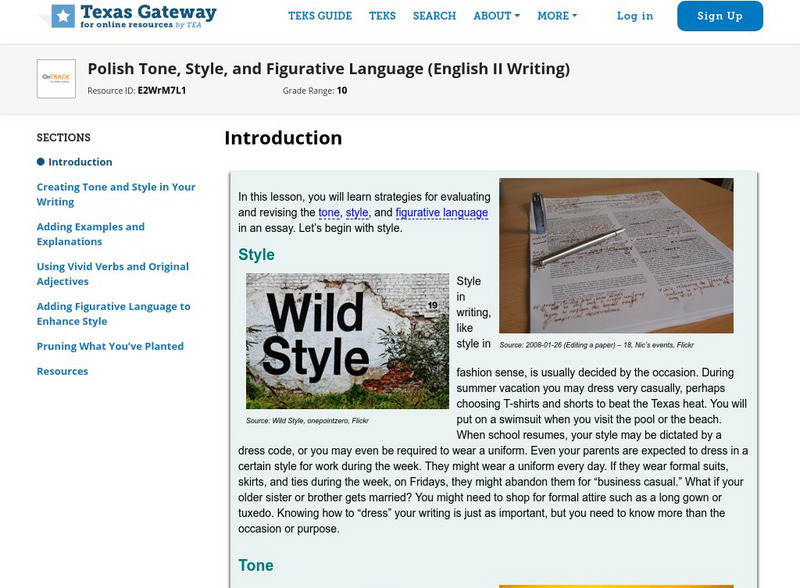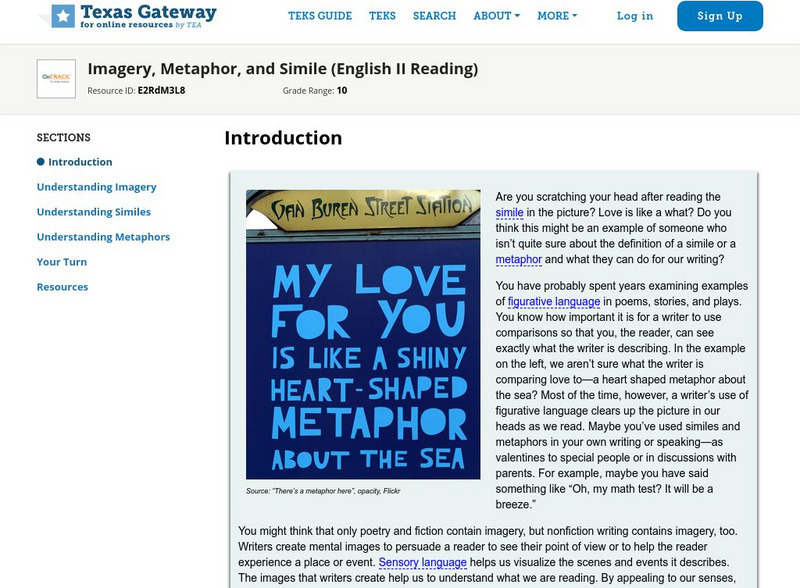Read Works
Read Works: Monster of the North
[Free Registration/Login Required] An informational text about the skeleton of a plesiosaur, a giant sea monster, found by scientists near the North Pole. A question sheet is available to help students build skills in reading comprehension.
Read Works
Read Works: Wonderful Trees
[Free Registration/Login Required] A poem about trees by Arin Lapa. A question sheet is available to help students build skills in reading comprehension.
Texas Education Agency
Texas Gateway: Polish Tone, Style, and Figurative Language (English Ii Writing)
In this lesson, students will learn strategies for evaluating and revising the tone, style, and figurative language in an essay.
CommonLit
Common Lit: Eating Together
CommonLit.org is a wonderful resource to use in a Language Arts classroom. Each story, article or poem is accompanied by guided reading questions, assessment questions, and discussion questions. In addition, students can click on words...
CommonLit
Common Lit: Columbus
CommonLit.org is a wonderful resource to use in a Language Arts classroom. Each story, poem, or article is accompanied by guided reading questions, assessment questions, and discussion questions. In addition, students can click on words...
CommonLit
Common Lit: Blizzard
CommonLit.org is a wonderful resource to use in a Language Arts classroom. Each story, poem, or article is accompanied by guided reading questions, assessment questions, and discussion questions. In addition, students can click on words...
CommonLit
Common Lit: "What Love Isn't" by Yrsa Daley Ward
CommonLit.org is a wonderful resource to use in a Language Arts classroom. Each story or article is accompanied by guided reading questions, assessment questions, and discussion questions. In addition, students can click on words to see...
CommonLit
Common Lit: Egg
CommonLit.org is a wonderful resource to use in a Language Arts classroom. Each story, article or poem is accompanied by guided reading questions, assessment questions, and discussion questions. In addition, students can click on words...
Read Works
Read Works: Welcome Back!
[Free Registration/Login Required] This passage shares advice about how to make the first day of school a great one. This passage is a stand-alone curricular piece that reinforces essential reading skills and strategies and establishes...
Love To Know Media
Your Dictionary: Literary Terms Lesson Plan
This is a lesson plan for teaching the seven literary terms used in poetry: simile, metaphor, alliteration, imagery, hyperbole, personification, and onomatopoeia.
Love To Know Media
Your Dictionary: Literary Terms to Know in Seventh Grade
This site lists and briefly defines the literary terms 7th graders should know including types of writing, literary devices, sound devices, figurative language, and parts of a story,
Love To Know Media
Your Dictionary: Onomatopoeia Lesson Plans for 10th Graders
This site offers links to lesson plans and ideas for teaching Onomatopoeia to high school young scholars.
Broward Education Foundation
Broward Education Foundation: The Arts and Crafts of Storytelling [Pdf]
In the Arts and Crafts of Storytelling, American folk heroes come to life, help students expand their vocabulary and increase knowledge of figurative language. Students identify figurative language like similes, idioms and hyperboles....
Department of Defense
Do Dea: Thinking Skills
In this self-guided course, you will be looking at several pieces of literature in many different forms. This unit will teach you some principles of thinking and learning and how to use basic literary terms in the analysis of literature....
Better Lesson
Better Lesson: Unit: Figurative Language With Casey at Bat
In this lesson, 5th graders learn how to analyze figurative language in the poem, "Casey At The Bat."
McGraw Hill
Mc Graw Hill: How to Use Strategies to Teach Students to Access Complex Texts
In this short video, the strategies of summarizing, clarifying, and asking-answering questions are used. These instructional tools will help teachers show students how to access complex texts. [5:54] CCSS.ELA-Literacy.CCRA.R.10
Better Lesson
Better Lesson: L.3.5a: Distinguish Literal and Nonliteral Meanings of Words
Links to 18 lessons and activities that build student skills in standard L.3.5a: Distinguish the literal and nonliteral meanings of words and phrases in context (e.g., take steps).
McGraw Hill
Mc Graw Hill: Vocabulary Acquisition and Use: Understand Figurative Language
Explains what similes and metaphors are and how they are alike and different. Provides examples and practice sheets for each.
Texas Education Agency
Texas Gateway: Imagery and Figurative Language
In this lesson, you will learn how to make complex inferences and use textual evidence such as imagery and figurative language to support understanding.
Better Lesson
Better Lesson: L.4.5b: Recognize Meanings of Idioms, Adages, Proverbs
Links to 10 lessons and activities that build student skills in standard L.4.5b: Recognize and explain the meaning of common idioms, adages, and proverbs.
Education.com
Education.com: L.4.5.b Worksheets: Recognize Meanings of Idioms, Adages, Proverbs
[Free Registration/Login Required] A site with links to 10 worksheets that can be downloaded and printed for student use while building skills with standard L.4.5.B: Recognize and explain the meaning of common idioms, adages, and proverbs.
Texas Education Agency
Texas Gateway: Polish Tone, Style, and Figurative Language
[Accessible by TX Educators. Free Registration/Login Required] In this lesson, you will learn strategies for evaluating and revising the tone, style, and figurative language in an essay. It also includes practice exercises.
Texas Education Agency
Texas Gateway: Literary Text: Close Reading of Poetry: Practice 3
This lesson will help you comprehend the poet's meaning by giving you practice in finding imagery, metaphors, symbolism, and allusions.
Texas Education Agency
Texas Gateway: Literary Text: Imagery, Metaphor, and Simile
Writers use sensory imagery ("smelled the salty air"), similes ("like a strong man playing tug-of-war"), and metaphors ("the waves roaring in my ears") to capture the reader's imagination. In this lesson, you will learn how to identify...




